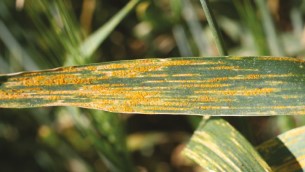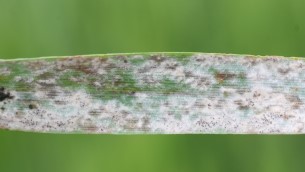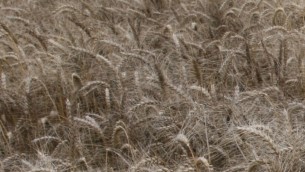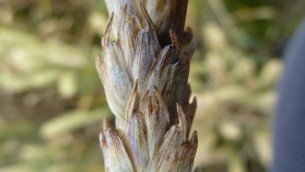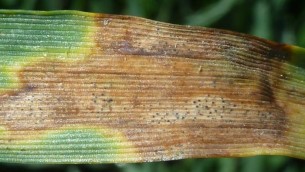Leaf Rust - Wheat
Puccinia triticina
Leaf rust (also known as brown rust) is a common disease of wheat which can result in significant yield loss if not controlled. Leaf rust is favoured by warmer, drier conditions with the initial
source of inoculum being infected volunteer cereals. Under favourable conditions leaf rust can develop very quickly. Spores are scattered at random on the leaf and are often surrounded by a pale chlorotic halo.

Leaf rust is found throughout NZ. Rusts are wind dispersed placing all wheat crops at risk.
Look out for:
- Brown rust pustules scattered across the leaf
Risk Factors:
- Cultivar choice
- Cool, moist conditions
Early infections of leaf rust are hard to distinguish from stripe rust pustules scattered on the surface of leaves. Later stripe rust pustules, which are quite yellow, form distinct stripes whereas leaf rust pustules, which are brown, remain scattered on the leaf.
Yield losses can be high, often in the order of 15-40%.













